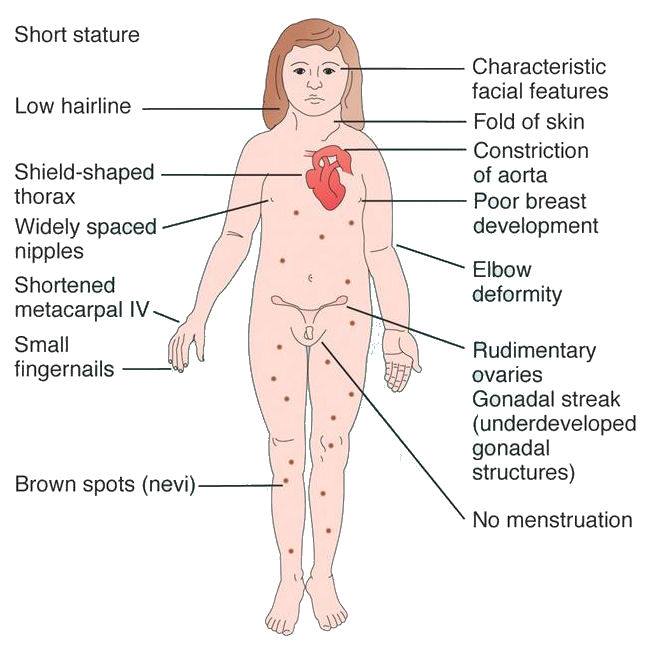Turner syndrome or Ullrich-Turner syndrome is a chromosomal inability where one or all parts of a sex chromosome are absent. It is also called Gonadal dysgenesis. This abnormality is a genetic disorder that affects a girl’s development.
Signs and Symptoms
1. Short stature. Girls with Turner syndrome who aren’t treated for short stature reach an average height of about 4 feet 7 inches (1.4 meters).
2. Lymphedema (swelling) of the hands and feet (edema or extra fluid in the hands and feet)
3. Reproductive sterility
4. Underdeveloped ovaries gonadal streak. Turner syndrome prevents the ovaries from developing properly, which affects a girl’s sexual development and the ability to have children.
5. Amenorrhea or the absence of menstrual period. Because the ovaries are responsible for making the hormones that control breast growth and menstruation, most girls with Turner syndrome will not go through all of the changes associated with puberty unless they get treatment for the condition.
6. Obesity and increased weight
7. Poor breast development
8. Hearing loss
9. Has problems with concentration, memory and attention
10. Abnormal bone development (especially the bones of the hands and elbows)
There is no cure for Turner’s syndrome. However, the symptoms can be managed by the following:
a. Growth hormone
b. Estrogen replacement therapy

Leave a Reply